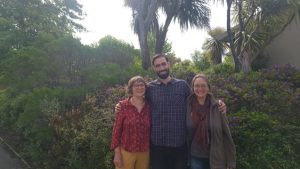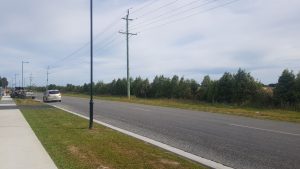
Blog post by Alexandre Molina Sourdat.
As wildfire risk attention has grown internationally related to global warming and the intensification of the damage due to this hazard, this concern remains attached to a rural or wildland context. Even if this assumption starts from a logical point, assuming that urban areas will not be affected or should not be concerned about wildfires could prevent us from addressing risk in huge areas, especially large communities and populations living in urban areas.
I recently arrived from an 8-week secondment hosted by Scion Research in New Zealand, particularly in Christchurch City. I joined the Wildfire Research Department collaborating on a research around urban planning and wildfire risk in the Rolleston area, which is just a few kilometres away from Christchurch, in the Selwyn district. Given that previous research had shown the limited actions that households could take in an urban environment, the aim of this research was to see how much wildfire risk is integrated into the planning of new urban developments in Aoteroa/New Zealand.
Selwyn District Council. Image: UOC.
During this period, I worked alongside Andrea Grant and Lisa Langer conducting interviews and a focus group with different professionals involved in the development of Rolleston. These interviews carried out with architects, engineers, developers, and planners, looked into their role in the development process, the changes they had seen and expected for the study area, and how they addressed and incorporated natural hazards, especially wildfires, into their work. We were especially interested in the urban fringe, as the effective limit between urban and rural/wild areas.
Lisa Langer (Scion), Alexandre Molina (UOC) and Andrea Grant (Scion). Image: UOC.
As a case study, Rolleston has some very interesting features. This suburban area has had a huge growth in the last 10 years, related to the proximity to Christchurch and good ground conditions for building, which has taken more relevance after the 2010 earthquake that shook and left lasting marks around the city until today. At the same time, at a country level, New Zealand has changed its national housing policy looking to increase the density and quantity of houses around major cities.
The urban fringe of Rolleston. Image: UOC.
After the interviews we conducted, and as preliminary results, we could tell that wildfire risk wasn’t addressed in the urban development process, particularly in the Rolleston case. This was related to the perception of the absence of a real danger. At the same time, the concern for wildfire is usually left as something tied to forested and steep areas. Or maybe something that could appear in the future depending on the experience of a traumatic event to raise public concern. Related to this low-risk perception, urban development as a multidisciplinary process lacks an actual stage or face in which wildfires could be considered, and how to manage them evaluated. Even though wildfire risk in New Zealand is at the moment lower than in other countries like Australia, Spain, or the west coast of the USA, the global reality of climate change suggests that temperatures and drought seasons will increase, exposing more territories to wildfires.
“Show room Street”, new urban developments in Rolleston. Image: UOC.
The research conducted by Scion in New Zealand connects with the multidisciplinary work carried out by the Open University of Catalonia (UOC), collaborating with the Pau Costa Foundation and the Universitat Politècnica de Catalunya, analysing the risk and vulnerability in Barcelona peripheral barris (neighbourhoods), bordering Collserola National Park. While these two realities and research are very different, they both underscore the importance of considering wildfire risk as a multi-geographical phenomenon and not only as a rural or wildland problem. At the same time, in a broader sense, they allow us to rethink the way in which we are constructing and imagining urban life in the near future, the limits of the urban, and its relationship with the environment.






Leave a Reply